January is making a gracious exit here in the Great Canadian North, and I for one am very thankful. Only one more month of winter to go (she says, somewhat defiantly). Yup – spring begins on March 1, according to the widely accepted meteorological definition of seasons.
Most of us are familiar with the astronomical definition, which uses the dates of equinoxes and solstices to mark the beginning and end of the seasons:
- Spring begins on the spring equinox;
- Summer begins on the summer solstice;
- Fall (autumn) begins on the fall equinox; and
- Winter begins on the winter solstice.
But let’s not use that definition.
Let’s embrace the meteorological definition, wherein the seasons begin on the first day of the months that include the equinoxes and solstices:
- Spring runs from March 1 to May 31;
- Summer runs from June 1 to August 31;
- Fall (autumn) runs from September 1 to November 30; and
- Winter runs from December 1 to February 28 (February 29 in a leap year, as we will have in 2020).
Here’s holding good thoughts!
On that happy note, I’ve set a spring(ish) table with Victoria & Albert Clover.
Part of the William Morris collection by Pfaltzgraff, the pattern was adapted from a wallpaper design by one of William Morris’ trainees, John Henry Dearle for Morris & Co., England from 1912. It’s discontinued, but I’ve seen some available on eBay.
I’m a sucker for the Arts & Crafts style when it’s confined to accent pieces. I don’t think I could live with scads of the wallpapers, featuring exuberant prints in all their glory. The photo below is from the V&A Museum website:
But in small doses, the patterns are wonderful. Here is another one by John Henry Deale for Morris & Co, the Daffodil Mug, available from Kitchencraft in the UK (image courtesy of Kitchencraft).
Strawberry Thief is likely William Morris’ best-known pattern and this interpretation is by Spode, who I note has expanded the line quite considerably, with both a red and blue pattern available now on their website. Strawberry Thief’s pattern was registered in 1883, pre-dating Clover by almost 40 years. I adore this set.
I have only eight salad plates in Clover and its gentle palette lent itself to a somewhat more subdued table.
La Fleure Yellow depression glass by Tiffin Franciscan picked up the subtle sunny accents on the plates. The glasses shown below are the Water glass (the larger stemmed one) and the 10 oz Footed Tumbler.
It’s one of my favourite glassware patterns to use in the spring, as the soft shade of yellow goes well with many different patterns, such as Blue Chintz, also by Spode.
Back to Clover. I styled the table with wooden accents including rattan chargers and some candlesticks in a modern interpretation of a barley twist style.
Dinner plates in Baronesse White by Tirschenreuth served as the neutral base for the detail-rich Clover salad plate.
Small leaf-shaped open salts added some more flora-themed interest.
The grocery store supplied a variety of daisies. chrysanthemums and alstroemeria to make a colourful centerpiece.
I had been hoping to snag some orange tulips, particularly parrot tulips to use but no luck.
Parrot tulips are in short supply this year, it seems. I’m going to have to search farther afield. They’re one of my fail-safe ways of warding off the winter blues. I’m always ecstatic when I can find a bunch. They look so glorious tucked up together happily in the creamware chestnut bowl (lined with clear plastic!).
Have a wonderful weekend, everyone. I hope you are doing something fun to mark the beginning of February.
I’m sharing this post with Between Naps on the Porch.









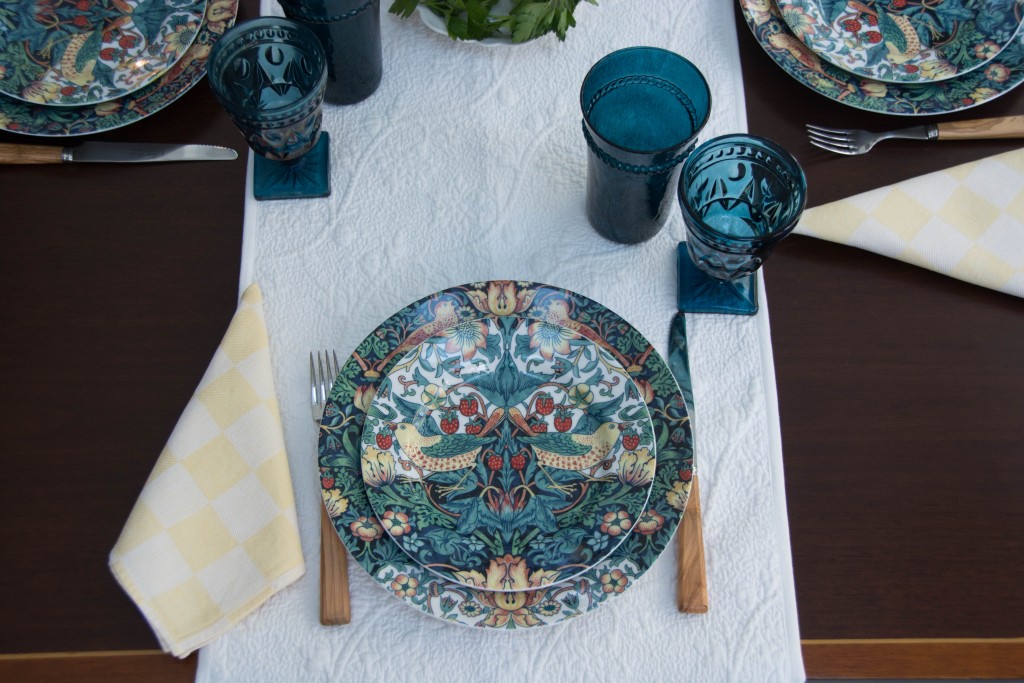


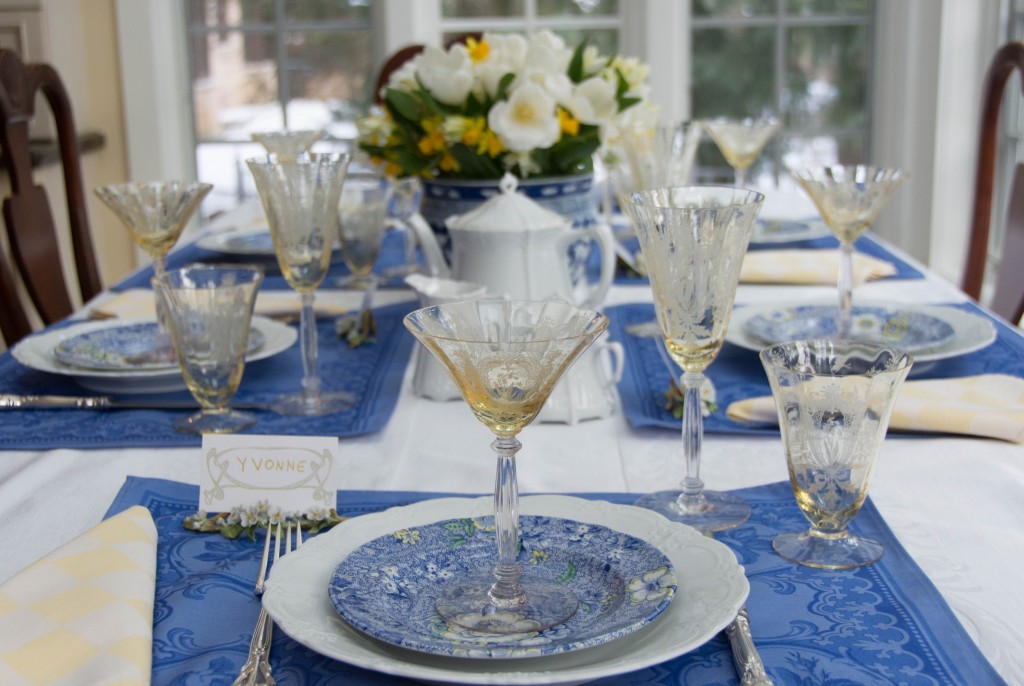


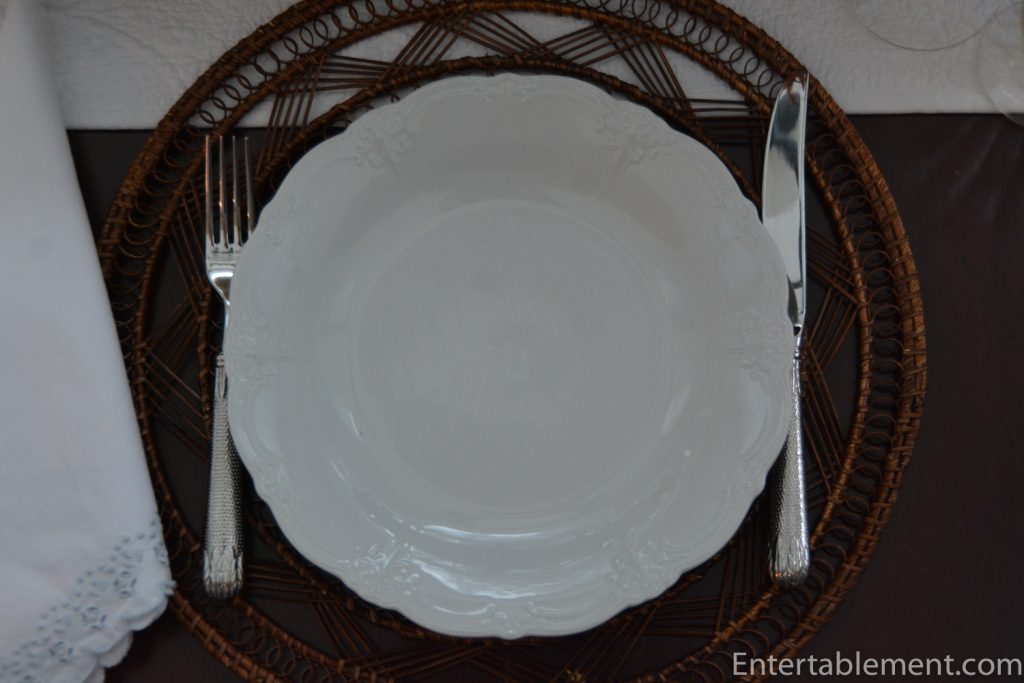
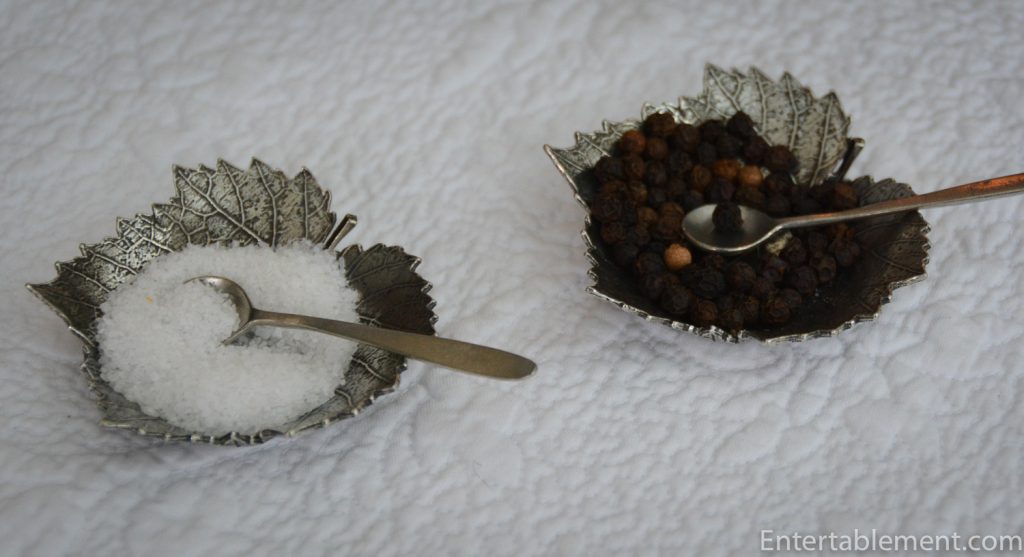
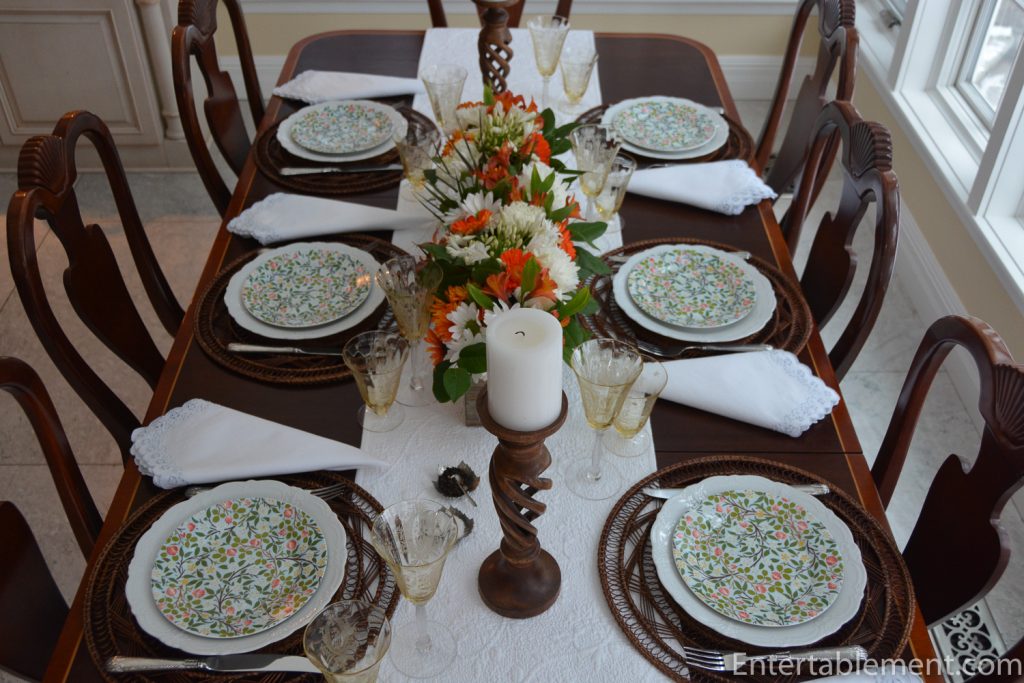
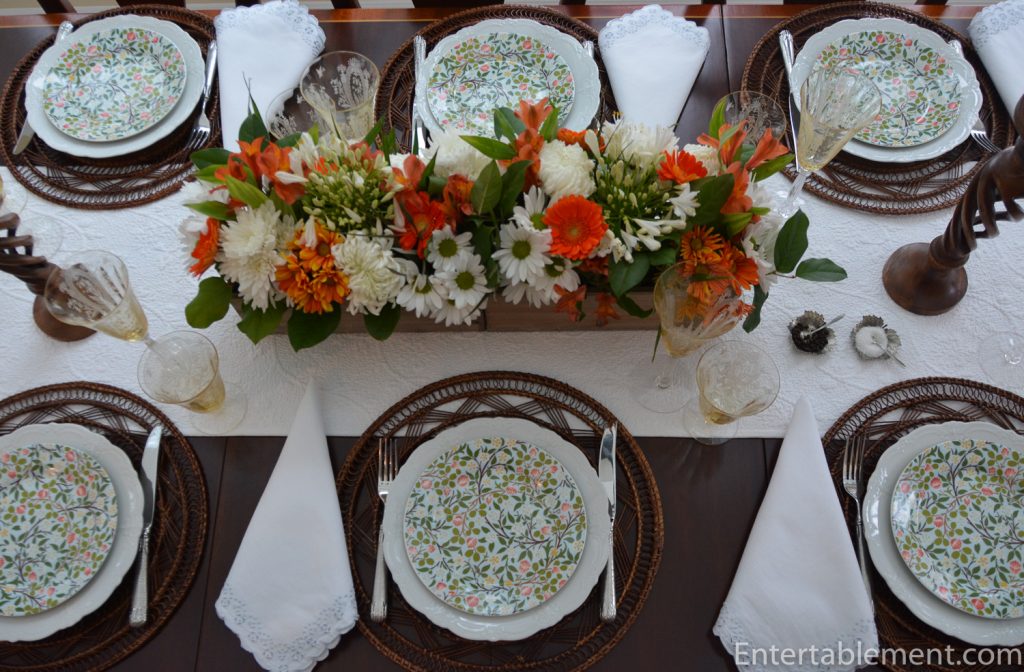





Incredible table. A breath of spring sorely needed at this time
Thank you !!!
Thanks, Jenn! It’s been quite mild (for Canada) and I’m keeping my fingers crossed we get through February relatively unscathed. At least we’ve been able to get out a bit without shards of ice underfoot… Hope you’re well.
Oh this is beautiful Helen! I love your plates and lovely flower arrangement! Also love your Blue Chintz table – the blue and soft yellow together are glorious! Hope your spring is on the way! 🙂 Thanks as always for this gorgeous inspiration!!
Thanks, Barb. We are all anxious for a bit of warmer weather! I hope things are well with you.
Dear Helen,
I’m always scared of weird greens, so picking out the warmer colours in this pattern gives a light touch. Many decades ago I tiled a hearth in a Morris thistle pattern I’ve never seen since. It was a large and simple enough motif that it wasn’t overwhelming. There’s been a Strawberry Thief pitcher kicking around my Home Goods for weeks. Makes me sad that no one buys it…maybe they’ll mark it down, and I’ll use it for a vase. Even we have cool weather these days…hang in there.
P.S.: No Burns dinner??
No Burns dinner this year. Maybe next year. Himself was away skiing, so I had a quiet nip on my own.
Sounds like that strawberry thief jug has your name on it. It would likely make a stunning vase. Probably best with a monochrome arrangement, don’t you think?
Oh so you’re a ski-widow too; lol. As ex-Alpine rescue, his nose starts to twitch when the powder begins! Of all the years, this was one to have a Burns party…I will confess to a tear when they broke out in Auld Lang Syne in the EU Parliament…sad.
I know the Brits always sort things out, and at last the Remain/Leave decision is behind them, but I couldn’t help feeling gutted. I fear it’s a “grass is greener” chimera, and the Boris victory was more of an “anything but Marxist socialism” victory. Oh well, it’s done. For better or worse…
Ahhhh, I love that floral arrangement!
Thanks is, Bev. Flowers make everything seem brighter.
Ah, it’s good to see someone else uses the same time frames that I do.
Love the V&A clover plates.plates .
I like “our” seasonal system, don’t you?
Glad you like the table, too!
What a lovely table Helen and the flower arrangement is gorgeous! Hurry up spring!!
Thanks, Kim! The flowers were just two mixed bunches from the grocery store. Nothing fancy, but they worked.
Yes to spring coming reeeaaallly soon.
We just arrived in Hawaii to
mark the start of Spring but it feels like summer! My gosh you’ve set another beautiful table again with gorgeous flowers and all. I love the blue chintz with the soft yellow glasses which seems so springy. Only one month left of winter and rather mild in Ct. barring a few days in Jan. Stay warm.
I feel like we’ve gotten away with murder, too, Maura. It’s been quite mild with very little snow. Fingers crossed it continues. Enjoy Hawaii! Best to Bill.